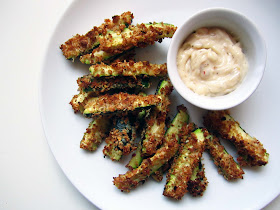Exciting news... I have my very own magazine column, with Appetite magazine, a new North East foodie publication. They featured a lovely piece about this blog and my Autumn Graze market back in October, and I wrote a little piece about Christmas cooking for them in December. This will now be a regular column in every edition!
My first article is about comfort food... What is it, what does it mean to you, what is your favourite comfort food recipe, would you sit in a bath of risotto? I just discovered a new favourite to add to the list this weekend, Cauliflower and Mascarpone Risotto with Chorizo, creamy and delicious with spicy hot chorizo... You can pick up a copy of Appetite in lots of cafés, restaurants and foodie shops all over the North East, including Stewart and Co, Carruthers and Kent, The Broad Chare, Caffe Vivo, Cafe 1901... To name a few...It is full of recipes, interviews with local chefs and suppliers, recommendations, tips and restaurant tales. The latest edition with my little comfort food article is out right now if you want to seek one out...
This Shepherd's Pie formed part of my 'research' it was really hard work getting cosy in front of the tv with a glass of red wine and a bowl of rich meaty, creamy potato delicious Shepherd's Pie. Really hard work I tell you... Apparently it is the nations favourite comfort food, not sure how this is calculated but I enjoyed mine a lot.
I've made quite few Shepherd's pies over the years, I don't have a consistent recipe, but I think this one is perhaps a keeper. My potato topping to mince ratio was a bit out, too much topping, so I've reduced the amount here and yours should turn out perfect...
Simmer a large potato and a large parsnip cut into chunks in salted water until tender. While they are cooking fry a chopped onion and a diced carrot in 3 tablespoons of butter until they are soft and golden. Then add 450g of raw lamb mince to brown, don't stir it too much, just now and again until it has coloured all over, leave it to cook for about 10 minutes. Add 1 tablespoon of flour and 1 tablespoon of tomato purée and continue to cook for another 5 minutes, stirring as it cooks. Then pour in 250ml of chicken stock and add a bay leaf and a sprig of thyme, some salt and pepper and a teaspoon of Worcestershire sauce. Bring it all to the boil and then simmer for 30 minutes.
Pre heat the oven to 190°C and mash the potato and parsnip with some butter and a splash of milk, not too much as you need the topping to be firm. Add the lamb to an oven proof dish and top with the potato and parsnip, add it a little at a time from the centre of the dish, so you get an even spread and it doesn’t just sink in a big lump... Fork the potato into rough peaks so you get good crispy bits when it is cooked and top with a scattering of a grated cheese of your choice... Finally bake for about 25 minutes until golden brown. Leave it to rest for 5 minutes when it is ready, it gets as hot as a volcano in the middle and you just can't appreciate it properly when the first mouthful burns your tongue... Serve with peas or greens, whatever you fancy.
The leftovers the next day are even better I think, if that's possible. I'm currently laid low with a bit of a nasty bug, I think comfort foods like this can cure illness sometimes, or warm you up more than the heating even can, right to the middle... I wish there was some left. I'll have to settle for a new favourite... Haggis and Mash. That should see me right...









































